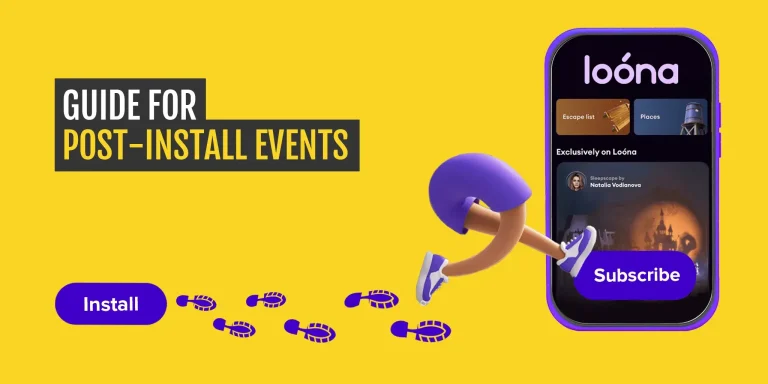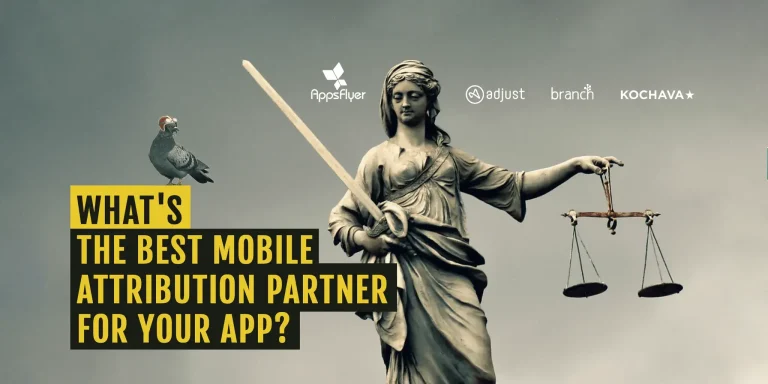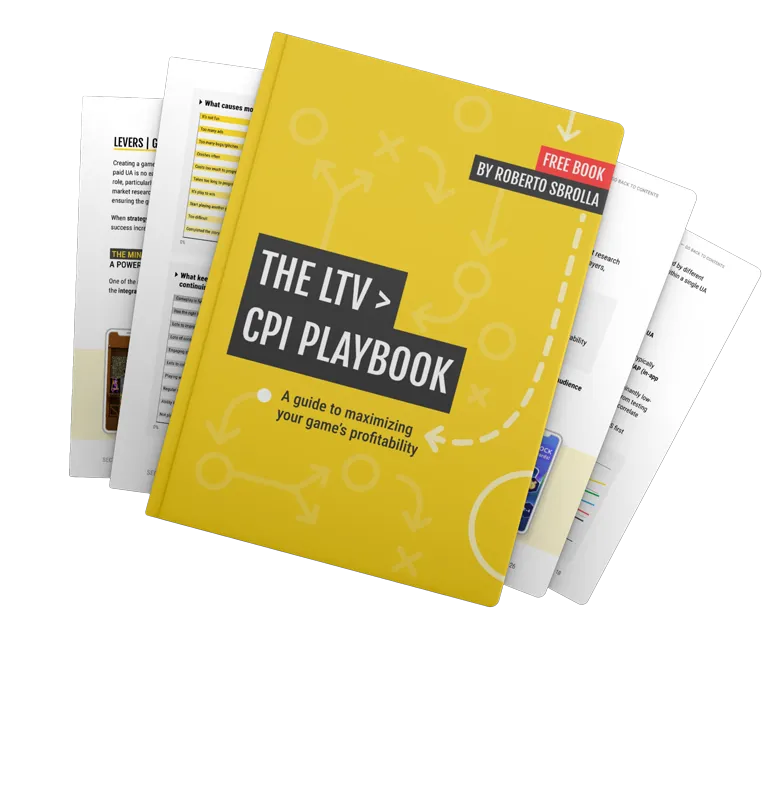AppsFlyer, AppAgent, and Incipia have collaborated to create a comprehensive guide on predictive LTV modeling. This must-read resource caters to mobile marketers, UA managers, and marketing analysts.
Drawing insights from experts representing companies like Rovio, Hutch Games, Wargaming, Joom, Wolt, Blinkist, Kiwi.com and Boombit, this guide offers a holistic view on how LTV modeling differs across various business models.
In this guide, you will learn:
- The 3 main approaches to lifetime value (LTV) prediction.
- Methods for assessing marketing profitability using Excel.
- How to predict in-app ad LTV.
- Best practices shared by top experts.
If you prefer a video format, you can watch my talk from MGS Berlin: How Do Real-Life Companies Use LTV Predictions?
PREDICTIVE MODELING: BASIC CONCEPTS AND MEASUREMENT SET-UP
WHY BUILD Prediction MODELS?
There are numerous benefits to predictive modeling in mobile marketing. Knowing your typical user behaviour and the early milestones that separate users with high potential and users with low potential can be useful especially during an acquisition and re-engagement fronts.
Predictive modeling helps marketers optimize their ad spend, target the right users, and predict the lifetime value (LTV) of different segments, ultimately improving user acquisition and marketing ROI.
SO, WHAT SHOULD I MEASURE?
To understand what you need to measure to get your predictions right and what’s not necessary, let’s briefly explore which data points are useful. Here are some key areas to focus on:
Metrics
- Legacy metrics such as CTR and CTI (low confidence in predicting profit, fastest availability).
- Early indicator metrics such as CPI and retention rate (medium confidence in predicting profit, fast availability).
KPIS
- Tier 2 KPI confident predictors such as CAC (a great article on customer acquisition cost by AppAgent), CPA and many others (medium-high confidence in predicting profit, slow availability).
- Tier 1 KPI confident predictors: early revenue (LTV) and consequent ROAS as an indication of long term success (high confidence in predicting profit, slowest availability).
How Metrics and KPIs Differ Across App Types: Retention and ARPU are particularly important for high-retention games, whereas subscription-based apps may focus more on early revenue and user segmentation.
Metrics vs. KPIs: Metrics tend to be easier to calculate and mature much sooner than KPIs, which tend to take longer or involve complex formulas.
The complete scope is in the full version of this article.
Pros and Cons of Different LTV-Based Predictive Models: Insights from Top Marketers
Building an LTV model to predict Return on Ad Spend (ROAS) could be overwhelming due to obvious differences in the way different types of apps retain and monetize users; just think of how distinct in-app purchase games, subscription-based apps and e-commerce businesses are. It’s clear that there cannot be a one-size-fits-all LTV model.
LIFETIME VALUE MODELS
1. Retention-driven / ARPDAU Retention Model
Model a retention curve based on a couple of initial retention datapoints, then calculate the average number of active days per user (for Day 90, D180, etc.) and multiply that by an Average Revenue Per Daily Active User (ARPDAU) to get the predicted LTV. Best for high-retention apps.
2. Ratio-driven
Calculating a coefficient (D90 LTV / D3 LTV) from historical data and then for each cohort, applying this coefficient to multiply the real D3 LTV to get a D90 LTV prediction. Good for “Standard” types of apps including many game genres.
3. Behavior-driven / user-level predictions
Collecting a significant volume of data from app’s users (session and engagement data, purchases, geo / device type, etc.) and processing them using machine learning to define which actions or action combinations are the best “predictors” of a new user’s value. Best for data-rich apps with an experienced data science team.
FROM MVP TO COMPLEX MODELS
A good way to start your prediction path is with a simple “Minimum Viable Product” (MVP). The idea is to verify initial assumptions, learn more about the data, and gradually build a model. That cost/benefit ratio of more complex models is not necessarily better than simpler ones, which was proven by the fact that companies confessed that they tend to stick to conceptually simple models.
TEAMS & RESPONSIBILITIES
Ideally, there are two roles: an experienced analyst with an overreach to marketing that can advise on the strategy and tactical levels as well as decide which model should be used in addition to how it should be used; and a dedicated analyst which then “owns” LTV calculations and predictions on a day-to-day basis.
Outsourcing can certainly jumpstart the process, especially if a company has limited knowledge of the topic. However, in the longer term, given the product is found to be viable and more advertising dollars are being spent on more networks, an internal team should take over.
METHODS FOR ASSESSING MOBILE MARKETING PROFITABILITY WITH EXCEL
Excel is more powerful than you think. By using a scatter plot and bit of algebra, you can turn an Excel trendline equation into a powerful tool for identifying early on the point at which your marketing campaigns prove they are likely to turn a profit.
Access the User Acquisition Viability Calculator to model your entire UA funnel and predict profitability.
HERE IS A VERY QUICK GO-THROUGH GUIDE:
- Ensure you have enough Week 0 and 6-month data points. A rule of thumb for Week 0 ROAS-based predictions: shoot for at least 60 pairs of Week 0 and 6-month ROAS observations.
Split your data set into two groups: one for training and one for prediction. Place the lion’s share (~80%) in the training group.
Use a scatter plot to graph the data, with the Week 0 ROAS on the x-axis and 6-month ROAS on the y-axis. Add a trendline and its equation and R-squared settings.
Use the y = mx + b linear equation to solve for the equation’s x value (Week 0 ROAS) when the y value (6-month ROAS) is 100%.
Test your model’s accuracy using mean absolute percentage error (MAPE).You may even try out a few more trendlines (exponential, logarithmic, etc).
Predıctıng ın-app ad ltv
In-app advertising (IAA) has become increasingly popular, accounting for at least 30% of app revenue in 2018. Even developers who had been completely reliant on in-app purchases (IAP) have started monetizing with ads.
Contribution Method: This method is used to measure the contribution margin of channels to overall user behavior. The more a channel’s acquired users generate actions in an app, the more credit the channel gets for advertising revenues from those users.
Challenges in Predicting In-App Ad LTV: In-app ad revenue prediction is more complex due to the volume and structure of data across different ad networks, each with varying eCPM and payment models.
BEST PRACTICES FOR BUILDING MOBILE MARKETING PREDICTION MODELS
When building data models or systems that guide significant decisions, it’s not only important to build the best system possible but also to perform ongoing testing to ensure its effectiveness. Continuous feeding of your profit prediction models with relevant data is key.
Segmenting Your Users: Segment users into more homogenous groups for better accuracy and predictive power. This can also increase the predictive value of LTV models by providing more insights into smaller user cohorts.
Fınal word and next steps
To take your marketing predictions to the next level, try implementing these predictive modeling strategies in your campaigns. If you’re interested in learning more on how to calculate customer acquisition cost that is closely connected to LTV – check the article on “How To Calculate Customer Acquisition Cost (CAC) for your Mobile Application” and Download our free LTV calculator tool to get started on modeling your user acquisition funnel today!
CONTRIBUTORS
Alexandra Lomakina from Joom
Fredrik Lucander from Wolt
Matej Lancaric from Boombit (formerly at Pixel Federation)
Gessica Bicego from Blinkist
Anna Yukhtenko and Tim Mannveille from Hutch Games Kiwi.com
AUTHORS
Martin Jelínek from AppAgent
Gabe Kwakyi from Incipia
Shani Rosenfelder from AppsFlyer








